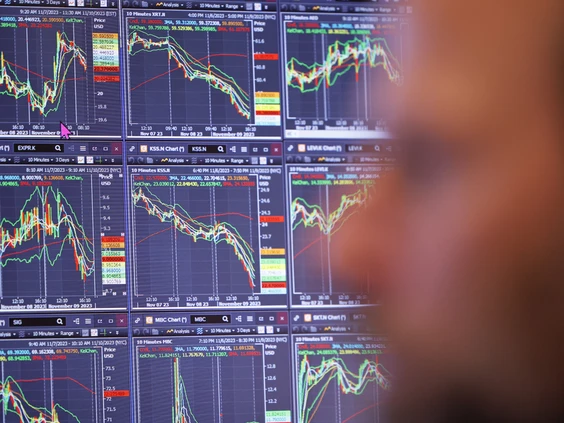Financial Post: FP Answers
FP Answers: Is this a good time to buy more fixed-income investments in my portfolio?

As seen in Financial Post: FP Answers on December 29, 2023
Q: I’m wondering if this is a good time to lean into fixed-income investments versus equities? Assuming this may be the case, how would an investor astutely increase their fixed-income exposure? — Mario P.
A: Specific areas of fixed income including high grade and areas of credit with attractive valuations and catalyst potential appear interesting currently. Before I get into the details below, it is important to understand what fixed income represents and the role bonds may play in a portfolio versus equity.
One of the ways governments and businesses raise capital to finance operations is by selling bonds. Unlike equities, bonds represent a contractual agreement between the borrower (or bond issuer) and the lender (the investor). The agreement outlines the terms under which the lender agrees to loan the money and typically includes details such as a maturity (when the principal must be repaid in full), the amount and frequency of interest payments and whether the borrower can call the bond (repay it) prior to maturity along with the price at which that may be done. If the borrower defaults on obligations under this agreement, the lender may demand repayment in full which differs from an equity investment. Bonds are higher up the capital structure than equity and therefore provide a superior claim on the assets of the issuer meaning that, should the company find themselves in bankruptcy, bond holders are paid back before equity holders.
Bond returns can include a combination of interest income (coupon payments) and capital gains (price appreciation). The term “fixed income” derives from the fact that payments are periodic fixed interest in the form of a coupon to the lender and, unless they are floating rate securities, this amount does not change despite fluctuations in the market price of the bond. There is an inverse relationship between bond prices and interest rates—as rates rise, the price of the bond decreases. The reason being that the future cash flows of the bond are discounted at a higher rate causing the present value to be lower and vice versa if rates fall. This is important in the current environment where rates have gone up drastically and given what this will mean for bond prices, if and when, rates abate should the economy weaken further.
With that said, there are currently several indicators that are supportive of an allocation to high grade fixed income. These include the following: 1) North American Consumer Price Index readings that have fallen significantly from peak levels; 2) Generally weakening economic conditions; 3) An inverted yield curve and a look back at previous recessionary periods which show that investing in the 10-year Treasury at peak inversions would have provided a maximum total return coming out of some of those periods in excess of 30%; 4) Extreme pricing – in Investment Grade for instance, the BBB yield-to-worst (the lowest yield that can be received on a bond) is elevated versus history; and 5) The speed and degree of rate hikes and what that has meant for yields in the past. (The previous two periods that had a significant step-up in rates were followed by a decline in the 10-yr yield of around two thirds from the late cycle peak.)
Outside of high grade, there are several areas of opportunity in corporate credit with compelling valuations and potential catalysts that appear attractive. These areas include precious metals, specifically gold mining companies where the divergence between spot gold and gold miners is around as high as it has been going back 20 years, implying that gold companies are cheap relative to spot gold. Another area of interest is the energy sector which previously faced a string of challenging years. Through that period many of these companies drastically reduced their leverage and now have robust balance sheets, strong asset coverage of debt and good free cash flow. Capital has been scarce in the energy space because of ESG considerations. This has raised the cost of capital (energy companies need to pay higher coupons to attract investors) and has resulted in favourable risk-to-reward dynamics in some cases. Cinemas and healthcare, two areas that suffered during the Covid downturn, are now trading at compelling valuations with attractive potential tailwinds. Another area of interest includes Treasury Inflation-Protected Securities (TIPS), as real yields are currently above 2%. This is interesting as the last time real yields reached these levels was back in 2008 and as they fell in the 4 years following that peak, the 7-10-year TIPS total return index returned approximately 50%.
Investors can gain fixed income exposure through mutual funds, ETFs, closed-end funds and by buying individual bonds. At PenderFund, we have an active process for evaluating the risk-to-reward of each investment and as a result turn over a lot of rocks to find suitable candidates for our portfolios. The objective of our process is to maximize the return for the default probability we’re taking on—buying the bond with the more attractive dynamics and selling the less attractive alternative. As always, investors should have a clear understanding of their investment goals, risk tolerance, and the pros and cons of each type of fixed income product.
Emily Wheeler, CFA
Portfolio Manager, Pender



